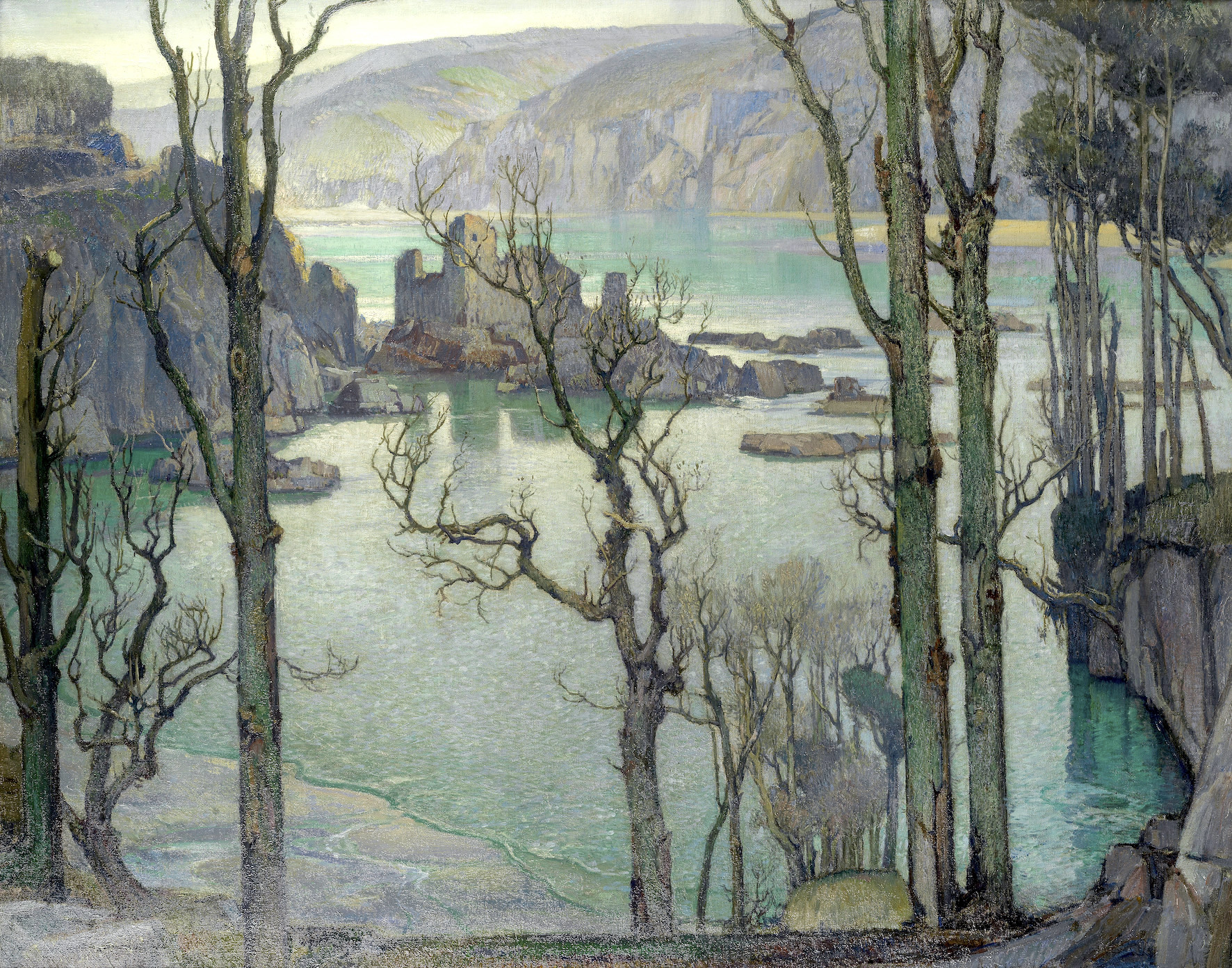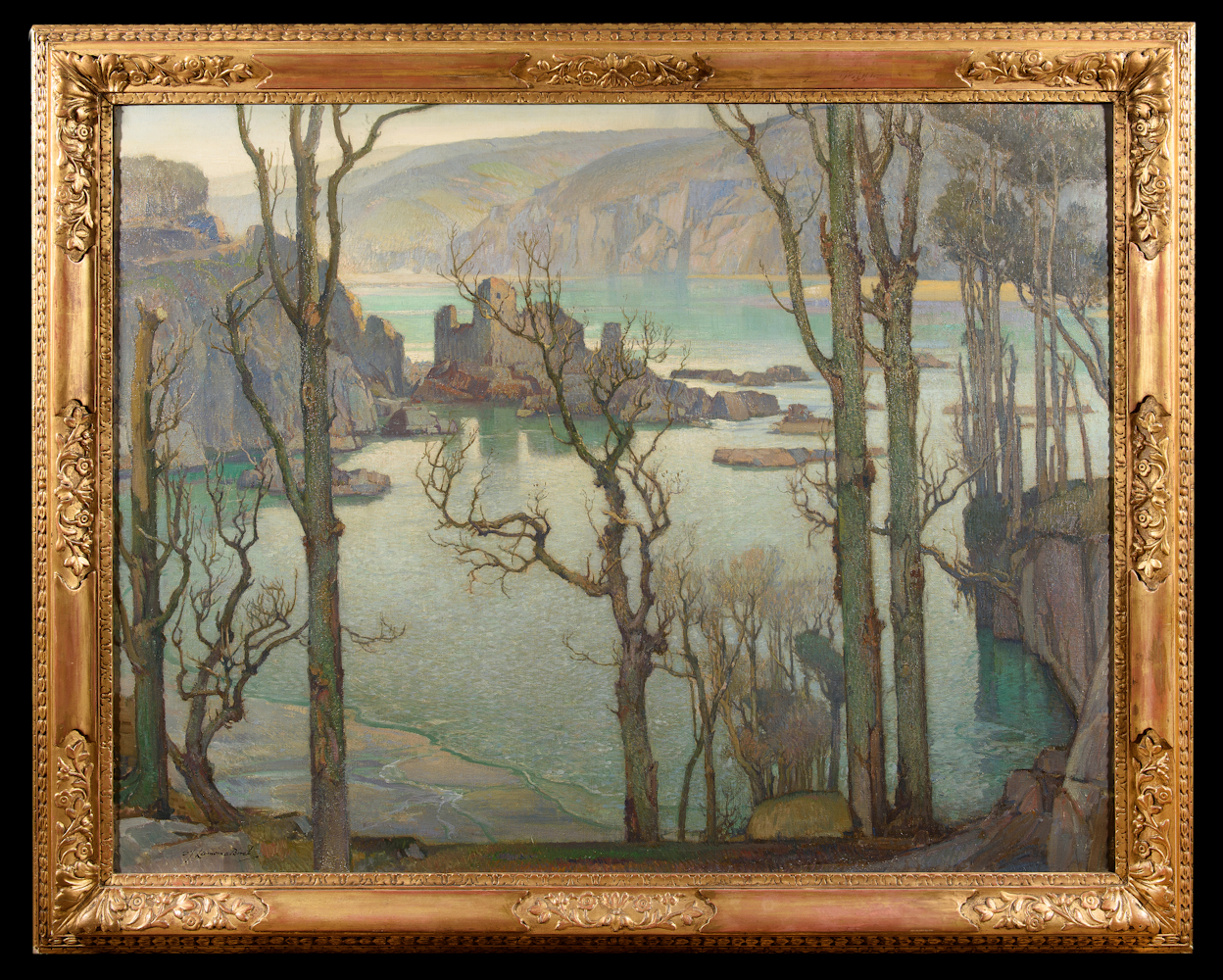John Birch was born on 7th June 1869 at Egremont, Birkenhead, Cheshire, near to the present Mersey Tunnels. He was the eldest of a family of ten children and, when their father died at an early age, left school early to help support them.
In 1889, at the age of 20, Birch visited the fishing village of Newlyn in Cornwall, having heard of the growing community of artists there, founded by Stanhope Forbes. Inspired by the landscape and the young artists he met in Cornwall, Birch took lodgings at Boleigh Farm, at the head of the Lamorna Valley, near St Buryan and started painting in earnest. Later on the advice of Stanhope Forbes, having saved enough money, he travelled to France settling in Paris, where he enrolled at Colarossi’s atelier to study for a year from 1895-6. Here he was influenced by the work of the Impressionists and began to paint from life. More »
Following his return, Birch held a successful exhibition of his French paintings in Lancaster, including all his Seine studies. This boost to his career encouraged him to settle in Cornwall permanently and so he returned to Boleigh at the end of ‘96. Here he stayed until 1902, the year that he met Emily Houghton Vivian, known as “Mouse”, who asked him to give her painting lessons. Birch agreed, the lessons rapidly blossomed into romance and they married within the year, when he was 33. The couple rented the Harbourmaster’s house by Lamorna Cove, Flagstaff Cottage. He built a studio here, beside a trout stream. Birch must have been blissfully happy, with his new bride, his painting and his fishing. Grant Waters, in his biography “Dictionary of British Artists” observes that Birch “was constantly torn between his love for art and fishing”, but it would appear that he achieved a happy balance between the two. Their daughter, Elizabeth was born in 1904 and she too, was to become a painter. Birch developed as a prolific artist, working in both oil and watercolour paint, in all lights, seasons and weather. At around this time, Stanhope Forbes, who was impressed by the younger man’s talent and dedication, suggested he should adopt an additional, professional, name in order to distinguish his work from that of another painter, working in Newlyn, Lionel Birch (fl. 1898-1916). Again, he accepted the advice of his mentor and began signing his work S J Lamorna Birch. He was a popular and kindly man and soon attracted other artists, in a second wave to Cornwall, including Laura and Harold Knight. In 1906, he held the first of several successful one-man exhibitions in London at the Fine Art Society and he was elected to membership of the Royal Society of Painters in Water-colours in 1914. Election to Associate membership of the RA came in 1926 and he became a full Academician in 1934.
Birch exhibited widely; 236 works at the Royal Academy from 1893 until 1955. Remarkably, he never missed a single year’s annual exhibition at the RA from 1905, through two world wars until his death. He also showed work at the RWS, the RWA, the (Royal) Glasgow Institute from 1909 to 1955, (97 works), and the Royal Scottish Academy from 1916 (6 works).
His work is held in dozens of public collections in England, Scotland, Wales and Ireland, from Aberdeen to Truro, including Tate Britain and the Royal Academy.« Less

